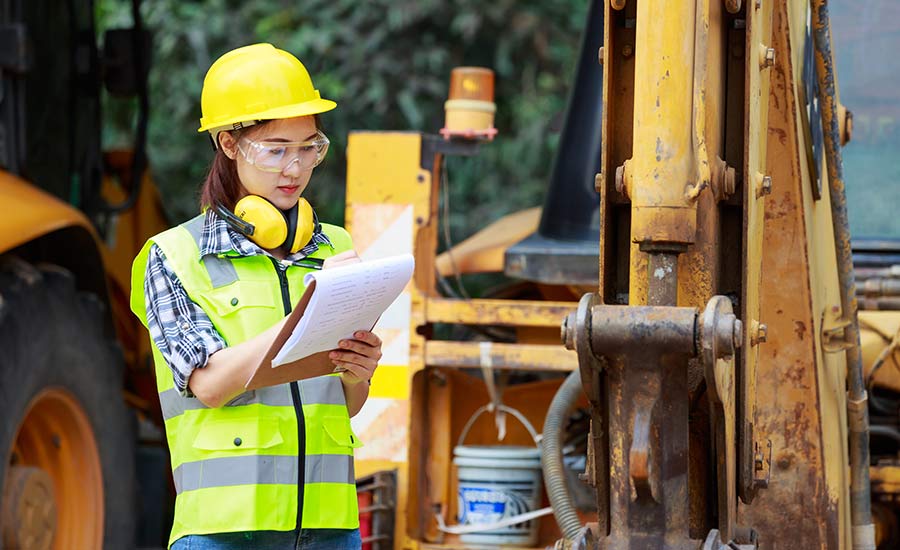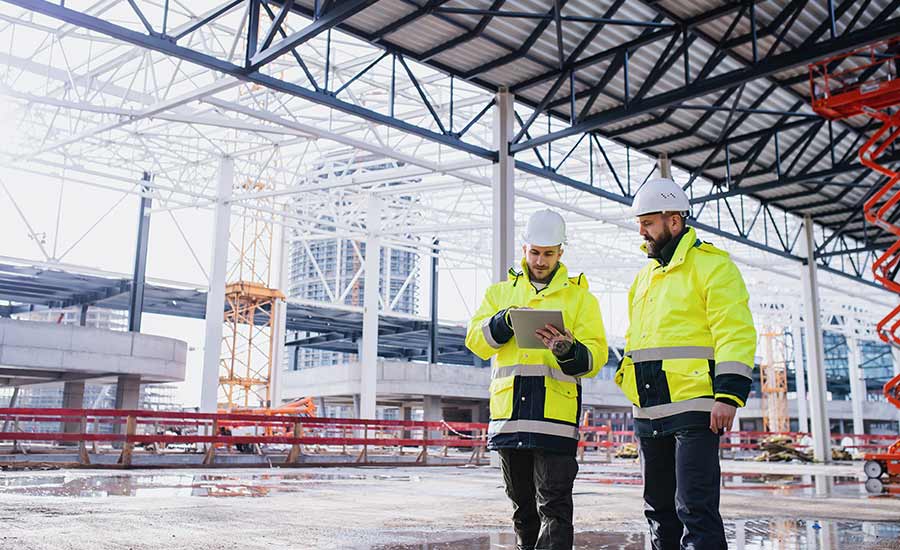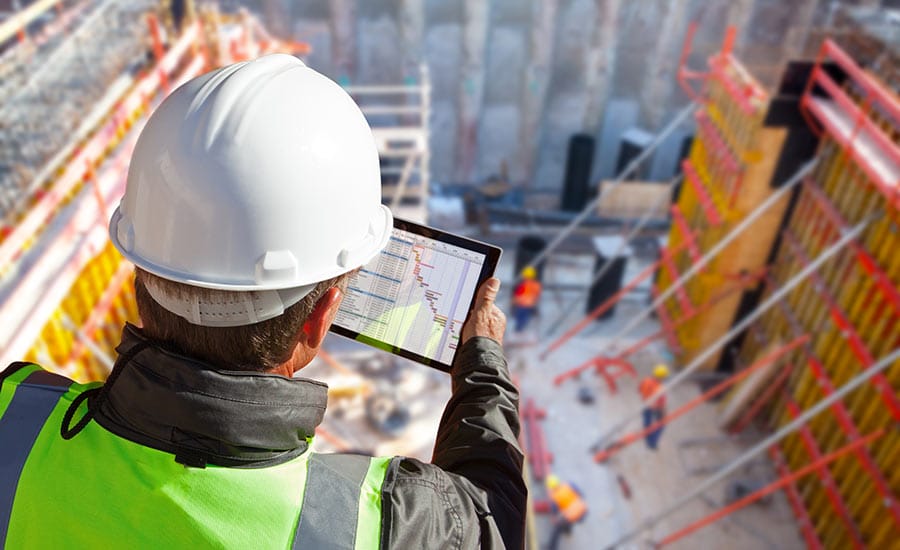With countless construction projects underway across Europe, proper site preparation helps maintain safety standards and protect people.
From soil testing to assessing potential site risks, a comprehensive construction site preparation checklist is key to making sure your construction project is safe and successful.
In this article, we’ll share exactly what a construction site preparation checklist should include. Plus, we’ll explain how to simplify your own preparation checklist so you can fill out, edit, and save checklists in the field or share them with your construction crew off-site.
What Is A Construction Site Preparation Checklist?
A construction site preparation checklist is a list of tasks that need to be completed before a construction project can begin.
Typically used by managers, this checklist includes items like testing soil, checking the groundwater level, and more, to ensure that the construction site is safe for employees.

Full Construction Site Preparation Checklist
Here’s what your construction site preparation checklist should include:
1. Test The Soil
Before proposing a structure, it is essential to assess soil properties and behavior to ensure that the land can handle construction tasks such as pouring concrete and excavation.
For example, if your construction site is near an earthquake-prone area, then testing must be included in the geotechnical report — a document that contains key information about your construction site’s soil.
Typically, an environmental engineer can run a soil test and conduct a ground scan.
When it comes to the soil:
- Check if the soil is suitable for construction.
- Identify liquefaction possibilities. If you find high liquefaction in the land, there is a chance of experiencing an earthquake within a 100-year period that will be strong enough to cause liquefaction.
- Monitor slope stability to determine the possibility of a landslide.
- Check groundwater level to prevent hydrostatic pressure so water doesn’t seep into the building’s basement over time.
- Identify what type of soil is on the construction site. Soil type is paramount to telling how much the ground moves when it is both dry and wet. Common types of soil include clay, sand and gravel, silt, rocks and loam.
- Check soil bearing capacity to determine if the type of foundation is suitable for the site’s soil conditions.
- Determine excavation-related hazards, such as exposure to overhead electrical cables, trenches, or scattered debris and equipment.
2. Secure Your Site
Secure your construction site to prevent theft, vandalism, and other possible crimes.
- Utilize appropriate lighting such as motion-sensor lighting to remove potential hiding places for criminal activity.
- Set up fencing or barbed wire to prevent unauthorized access to the construction site.
- Display “No Trespassing” signs to warn potential intruders.
- Set up video surveillance and/or hire security guards to help deter criminal activity.
- Lock heavy equipment and secure keys to prevent theft. (Speaking of heavy equipment, check out our heavy equipment inspection checklist — it’s also vital to preventing accidents!)
- Install tracking devices on construction machinery to monitor and recover stolen equipment.
- Purchase insurance, which can act as a safety net if any type of theft occurs.
3. Map The Wires And Underground Services
Is your construction site near railway lines or telecom services?
If so:
- Perform an advance survey of underground wires and assets as a precautionary measure
- Submit a letter to the natural gas supply department, electrical department, and telecom. department to inform them of your upcoming construction. These departments will then verify whether they have underground assets in the construction site.
- If wiring or other underground infrastructures are found on your construction site, ensure that the related department moves the wires to another location to prevent potential excavation damages.
4. Set Boundaries
Establish and mark the boundaries of your construction site.
- Using construction blueprints as your guide, install temporary fencing around your construction site using wire mesh, chain link fencing, or boards.
5. Clear Your Site
Call in a trained demolition crew to tear out and remove everything on your site, such as trees and rocks.
- Determine what heavy equipment will be used. Examples of heavy equipment for site clearing include bulldozers, forklifts, skid steer loaders, backhoes, stump grinders, and mulchers.
- Clear your site of debris.
- Remove trees and shrubs.
- Remove any existing structures or obstacles on your site, such as rocks and stones.
- Grade the land or level the surface.
6. Excavate Your Site
It’s time to transfer the building plan’s layout to the ground. In this step, soil should be removed to make way for your structure’s foundation.
- Secure excavation permits and requirements. Ensure that excavation activities comply with safety regulations, environmental protection laws, and land-use policies.
- Provide personal protective equipment (PPE) such as eye, face, head, hand, and foot protection, respiratory and hearing protection, and fall arrest systems.
- Determine what heavy equipment will be utilized for site excavation. The type of machinery utilized for excavation depends on site accessibility, soil site ability to carry the load, soil type, and distance of soil transportation. Examples of heavy equipment for site clearing include excavators, trenchers, crawlers, and backhoe loaders.
7. Compact The Soil
Soil compaction occurs when soil particles are pressed together to reduce pore space and in turn, strengthen the soil.
- Identify which soil compaction method your crew will utilize. Methods include rolling, ad tampering, and vibration.
- Determine what heavy equipment your crew will use. Heavy equipment for soil compaction includes a tamping plate compactor, rubber tires, smooth wheel rollers, crawlers, and sheep foot rollers.

Key Benefits Of A Construction Site Preparation Checklist
Construction site preparation is an important part of any construction project and should not be overlooked.
Creating a comprehensive checklist helps prevent serious issues such as construction accidents and expensive violations.
1. Prevent Accidents
Preparing your construction site and checking heavy equipment in advance ensures your construction workers are handling machinery that is working properly and ultimately, safe to use.
2. Prevent Theft
It is no secret that heavy equipment is expensive, making it an attractive target for thieves.
And with all of the expensive materials, tools, and equipment left on-site, once your construction workers call it a day, construction sites can act as breeding grounds for theft.
Creating a construction site preparation checklist allows you to pinpoint site security issues before the problem snowballs into stolen tools and equipment.
your checklists?
Streamline Construction Site Preparation Checklists By Going Mobile
At doForms, we provide mobile forms solutions that convert your paper construction site preparation checklists into a simplified and digitized system.
Our mobile forms allow you to create custom checklists, edit forms, and save and store all of your documents in a secure, centralized location for easy access.
With doForms, you can collect data in real time and generate reports on the go.
Our paperless approach means your construction manager doesn’t need to carry around construction site preparation checklists during their shift — which can easily get crumpled or disorganized!
The best part? You can use our mobile forms app even without WiFi! This means you can easily manage checklists, timesheets, reports, employee payroll, and more whether on-site or on the road.
Going the paperless route allows for better organization and cost savings — the average business spends $8,000 per year on printing materials.
Sounds convenient? Check out doForms in action:
Best Mobile App for Collecting, Transforming, and Preparing Mobile Data – doForms
In addition to construction site preparation checklists, going paperless with doForms allows you to:
- Build heavy equipment maintenance and near-miss reports
- Manage construction daily reports, time logs, employee schedules, and more
- Manage your construction workers, whether on-site or on the go
- Alter templates and administer payroll
- Eliminate the exposure of sensitive details — doForms keeps payroll details and work performance reviews safe, thanks to security features such as multi-factor authentication and HIPAA compliance
mobile route?
Wrapping Up On Construction Site Preparation Checklists
A construction site preparation checklist is one of the most important aspects of any construction project.
By ensuring that your site is properly prepared, you can minimize potential delays, reduce the risk of workplace accidents, and ensure that your project goes smoothly from start to finish.
While traditional checklists are messy, disorganized, and costly, switching to doForms allows you to reduce your paper costs, improve organization, and streamline internal operations.










